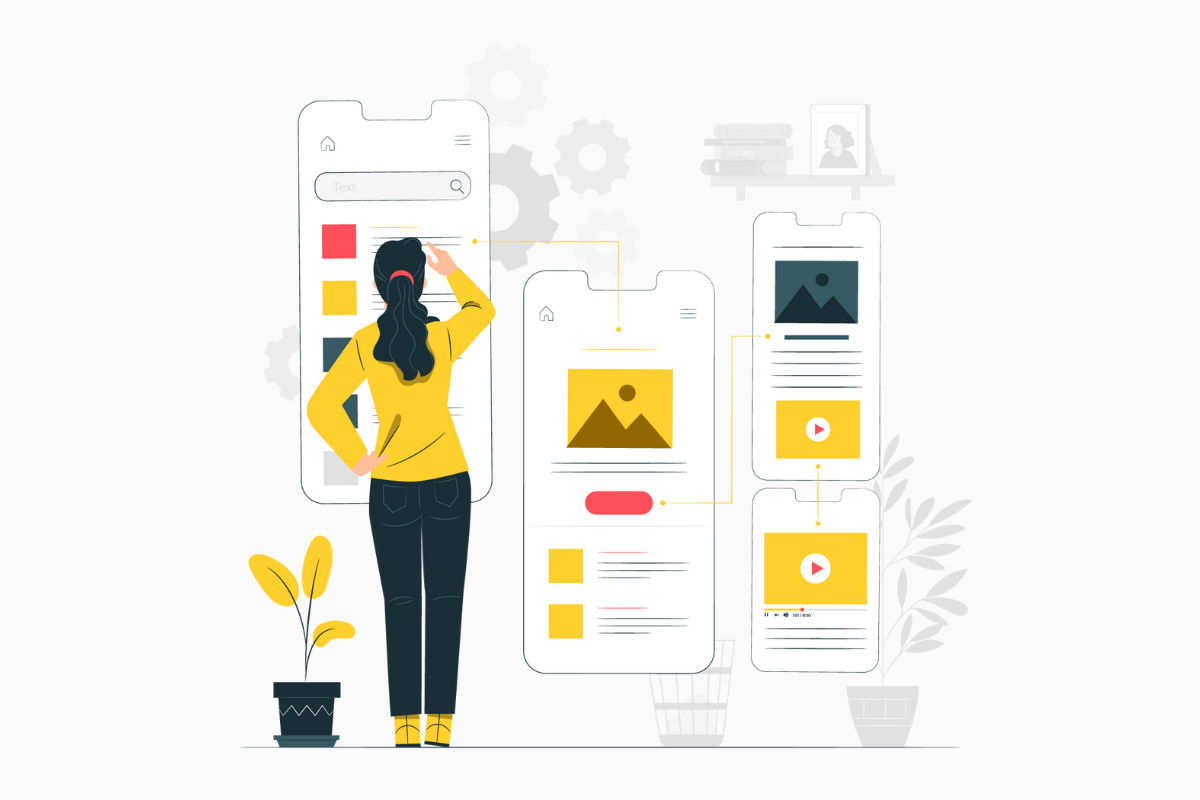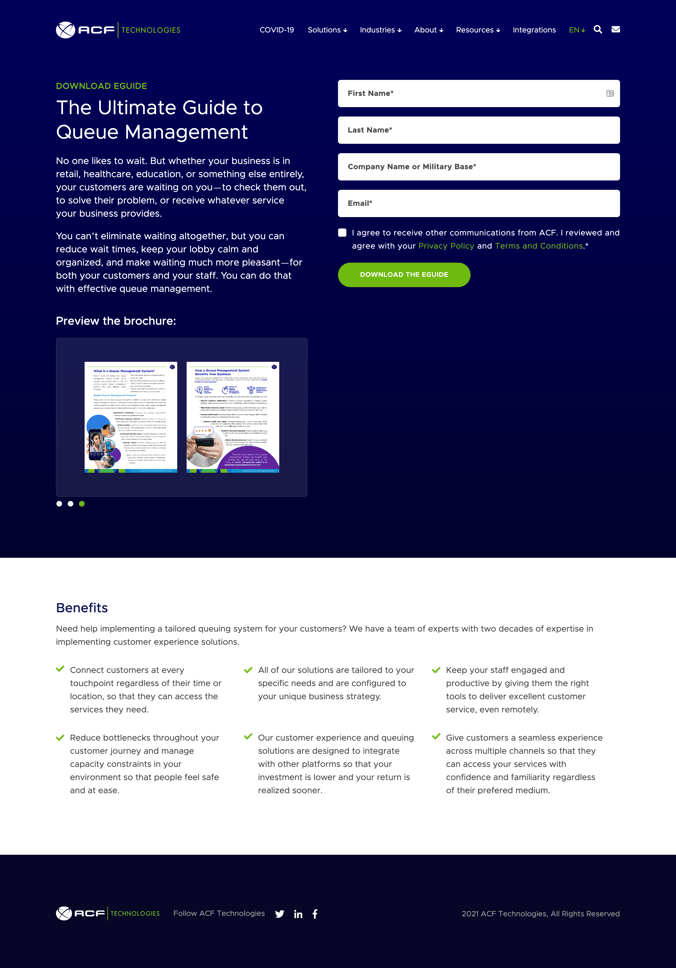5 ideas for a B2B Landing Page that actually converts
written by
Elena Iordache
date
22 June 2021
written by
Elena Iordache
date
22 June 2021

The median conversion rate in 2021 for SaaS businesses is 3% and for business services 3.5%, according to Unbounce’s 2021 Conversion Benchmark Report.
Not bad, but not great either, right?
So what makes for these rather low conversion rates? Marketers still struggle to build and optimize landing pages to perform well. Part of the problem is that there is no silver bullet solution or structure for the perfect landing page. It’s a combination between best practices and principles to follow and continuous testing and tweaking.
And this is exactly what we want to do in this article, show 5 key principles to start from when building high-converting landing pages.
We’ve also talked about these principles in a past webinar, you can find the recording here (content in Romanian). So let’s get started.
“Never start a marketing campaign without a dedicated landing page” is a saying that goes around in the marketing world.
And the reason for that is landing pages are dedicated web pages designed to achieve one single goal: whether that is to sign up for a product demo, free trial, free consultation session, or download a resource.
When you direct your visitors’ focus to one action they can take, the chances of conversion increase. If you put effort (and most of the time a little bit of advertising money) to bring target traffic to a webpage, there is no value in showing them several Calls-to-action. You want to keep them focused on one core goal.
On the opposite spectrum, other website pages such as the homepage are built for discovery (you want people to learn more about your offering, team, process, clients, etc) so there are multiple goals to be achieved.
We call this attention ratio: when the focus splits across 10 goals, the attention ratio is 1:10 versus when the focus is on one single goal.
Here is how a homepage looks in comparison to a campaign landing page – the latter features one single Call-to-action, hence one single goal.


You can use landing pages to accomplish different goals:
There are no silver bullet recipes for high converting landing pages, but there are a few foundational elements that you need to have. Without them, the landing page will lack clarity and cohesion, and not convince people to take the intended action. So it’s good to first know the rules, so you can then break them effectively.
1. A clear value proposition
The value proposition simply answers the question “what’s in it for me?” for your visitors. Whoever lands on your landing page should be able to grasp in a few seconds the value of your offering. Research shows you have around 5 seconds to get their attention, otherwise they’ll bounce off never to return again.
A common mistake we see is marketers tend to write value propositions that sound clever but lack clarity.
2. Your hero image or video
We are visual human beings, so use images and videos to offer people a snapshot of your landing page offering. If it’s an eBook create a mock-up and put it in the banner, if it’s a product sign up use product screens.
3. Benefits
Benefits are ways in which your offering makes your audience’s life better if they decide to claim the offer. But be aware that benefits are not features – it’s not what your product can do, but what your audience wins when they use it. Benefits sell, features support.
How many benefits should you add? We would say that 3-4 are enough, if you add too many you risk diluting their power, and too few can look unconvincing.
4. The Call-to-Action
Your call to action tells people what you want them to do, keep it simple and clear.
5. Social proof
Your audience is seeking to confirm the choice before hitting the Sign up/Download button. So social proof plays an important role in alleviating “buyer’s remorse”. Invest in testimonials and other social proof examples.

Clever messages can easily become confusing for people who are new to your brand and offering and that will make them leave the website. Instead, a simple message that emphasizes what they’ll get from signing up for your offer, might do the trick.

You can communicate this value proposition through these elements:
Here’s what ActiveCampaign uses as a closing statement.

Headlines are a very important element. We should spend 50% of time writing headlines and 50% writing the CTA.
Every piece of content you write on your landing page should be understandable by your target audience. Simply put, you should write in their own “language” and to do that, you should:
“On your Landing Pages, the Call-to-action represents the tipping point between bounce and conversion” – Michael Aagaard, Conversion Optimization Veteran

Your Call-to-action button can make or break the deal. So when you are building it, pay attention to:
What problem do you solve? How do you help your clients? Do you save them time, money, effort, do you help them sell more? Again, think about actual advantages and not features.
How can you identify these benefits? There are various ways to help you understand what made your clients buy from you: interviews, social media research, your competition’s websites (check out their testimonials, they’ll show how their product improves their clients’ lives).
People are more likely to buy/sign up if they see others have done as well. They need confirmation that their decision is the right one and you can enforce this feeling by using testimonials, case studies, video testimonials, client lists, or online reviews.
To take your testimonials a step further and make them super effective, consider:


Before launching a Landing Page, it’s best to have a post-conversion strategy. What happens with those leads after they are converted? They’ll probably get on a thank you page, that you can further use for upsell or you can include them in an email nurturing process. The journey doesn’t stop here, this is only the beginning.
So you’ve added all the key elements to your landing page, your visuals and copy look great and you’re ready to hit the publish button.
Before you do that, here are 5 questions to ask:
Once your landing page is live, track how people interact with it by using tools such as Hotjar to see where they click, how deep they scroll, and then based on those observations, test and make one change at a time.
I’d love to hear if you’ve tried these ideas and if they’ve worked for you. If you want to explore some more Landing Page related content, check out this article.
TAGS
strategy